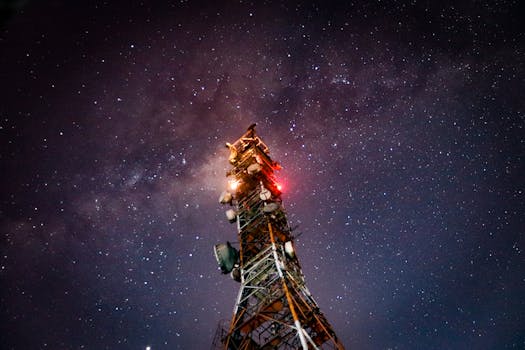
Starlink: Revolutionizing Global Internet Connectivity with Satellite Technology
Starlink is a satellite constellation developed by SpaceX, aiming to provide high-speed, low-latency internet connectivity worldwide, bridging the digital divide and transforming the way we communicate. With its cutting-edge technology and ambitious goals, Starlink is poised to revolutionize the way we access the internet, making it faster, more reliable, and more accessible to people around the globe.
Introduction to Starlink
SpaceX, founded by Elon Musk, has been at the forefront of space technology and innovation. In 2015, the company announced its plans to develop a satellite constellation, known as Starlink, with the primary objective of providing global internet connectivity. The project involves launching a network of low-Earth orbit (LEO) satellites, which will work together to provide high-speed internet access to users worldwide.
The Starlink constellation is designed to consist of nearly 12,000 satellites, each weighing around 260 kilograms. These satellites are equipped with advanced technology, including Hall effect thrusters, which enable them to maintain their position and altitude in orbit. The satellites also feature a unique design, with a flat panel and a single solar array, which provides the necessary power for their operations.
How Starlink Works
Starlink uses a combination of advanced technologies to provide high-speed internet connectivity. The system relies on a network of ground stations, known as gateways, which are responsible for communicating with the satellites. These gateways use advanced beamforming and phased array technologies to transmit and receive data to and from the satellites.
The satellites, in turn, use their onboard antennas to transmit and receive data to and from the gateways. The data is then routed through the satellite constellation, using a mesh network topology, to provide internet access to users. This approach enables Starlink to offer high-speed internet connectivity, with latency as low as 20 milliseconds, making it suitable for real-time applications such as video conferencing and online gaming.
Starlink also features a unique feature called "satellite handover," which allows the system to seamlessly switch between different satellites as they move in and out of range. This ensures that users experience minimal disruptions to their internet service, even as the satellites are constantly moving in their orbits.
Benefits and Applications of Starlink
Starlink has the potential to revolutionize the way we access the internet, with numerous benefits and applications. Some of the key advantages of Starlink include:
Global coverage: Starlink provides internet connectivity to remote and underserved areas, bridging the digital divide and enabling people to access information, education, and economic opportunities. High-speed internet: Starlink offers high-speed internet connectivity, with speeds of up to 1 Gbps, making it suitable for a wide range of applications, including streaming, online gaming, and cloud computing. Low latency: Starlink’s low-latency technology enables real-time applications, such as video conferencing, virtual reality, and online gaming, making it an attractive option for businesses and individuals alike.
Some of the potential applications of Starlink include:
Remote education: Starlink can provide internet access to remote schools and educational institutions, enabling students to access online resources and participate in virtual classrooms. Telemedicine: Starlink can enable remote healthcare services, allowing patients to consult with doctors and access medical services from the comfort of their own homes. Emergency services: Starlink can provide critical communication services during natural disasters and emergencies, enabling first responders to coordinate their efforts and respond to emergencies more effectively.
Challenges and Future Developments
While Starlink has the potential to revolutionize global internet connectivity, there are several challenges that need to be addressed. Some of the key challenges include:
Regulatory hurdles: Starlink needs to comply with regulatory requirements in different countries, which can be time-consuming and complex. Space debris: The launch of thousands of satellites into orbit raises concerns about space debris and the potential for collisions with other spacecraft. Interference: Starlink needs to ensure that its satellite signals do not interfere with other satellite systems or terrestrial networks.
To address these challenges, SpaceX is working closely with regulatory bodies, such as the Federal Communications Commission (FCC), to ensure compliance with relevant laws and regulations. The company is also investing in research and development to improve its technology and mitigate the risks associated with space debris and interference.
In terms of future developments, SpaceX plans to continue launching new satellites and expanding its constellation to provide global coverage. The company is also working on developing new technologies, such as advanced beamforming and phased array systems, to improve the performance and capacity of its network.



